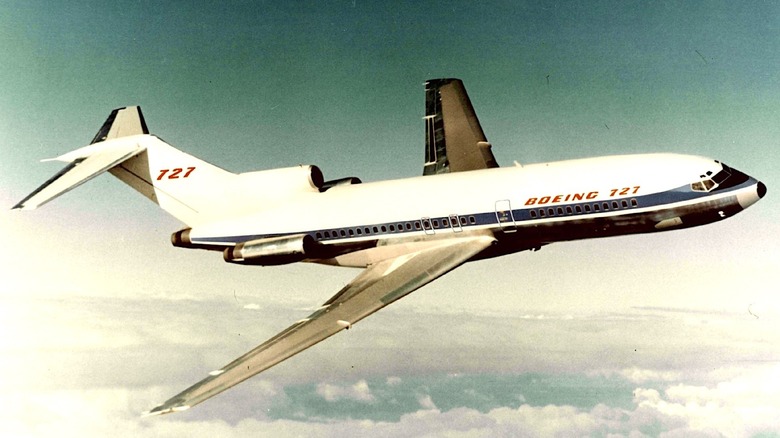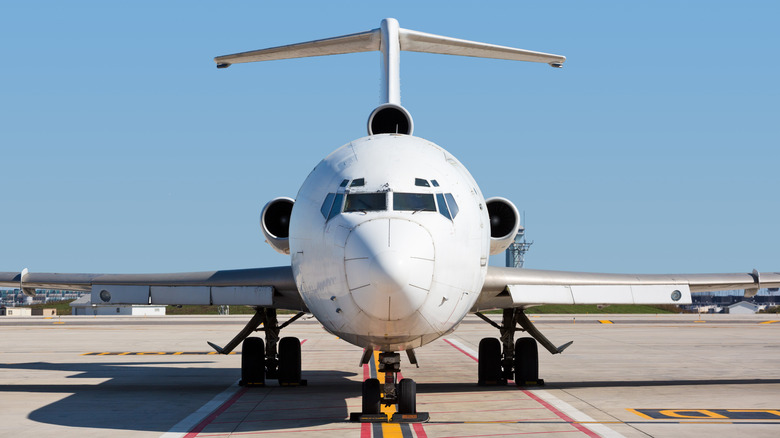Why Was The Boeing 727 Discontinued
Throughout its storied history, aerospace manufacturer Boeing has designed and produced what many consider to be some of the most iconic passenger aircraft to ever take to the skies. While massive Boeing builds like the 747, and 787 Dreamliner tend to headline conversations regarding Boeing's best passenger planes, one can easily argue that the 727 also deserves its share of attention, even if the manufacturer stopped making way back in the mid-1980s.
The triple-engine passenger jet made its first flight in 1963, with Boeing specifically designing the plane to be petite enough to get in and out of smaller airports, but large enough to traverse oceans. Initially, it appeared that strategy might backfire completely, as sales of the 727 were reportedly well below Boeing's expectations when the tri-jet hit the market. However, sales of the small passenger aircraft eventually took off, with the 727 ultimately becoming the first commercial jet to sell more than 1,000 units.
Despite the record-setting sales, the 727's production run came to an end a little over 20 years after it began, with Boeing pulling the plug on the build in 1984. As for why the company ended production on the 727, FlightGlobal head of strategic content and aviation intelligence Murdo Morrison told CNN in 2019 that, by the 1980s the planes were considered too noisy and inefficient compared to some newer jets. With airlines phasing the 727 out in favor of those newer, more efficient planes, Boeing had little reason to keep the 727 around.
Boeing 727s are still flying decades after production ended
Despite the fact that Boeing officially ended production of its 727 passenger jets in the mid-1980s, there were reportedly almost 1,900 of the builds in use at the time. Given that number, it should come as little surprise that the planes did not immediately fall out of use by airlines who'd been adding 727s to their fleets throughout the 1960s and 1970s. In fact, Boeing 727s would continue to operate as passenger jets for more than three decades after the final unit rolled off of the production line.
It was January of 2019 when the Boeing 727 flew its last commercial flight, doing so by completing a domestic Iranian trip for Iran Aseman Airlines. At the time, the actual 727 that flew the route was almost 40 years old itself, and was likely ready to be put out to pasture. Apart from ferrying passengers from one airport to the next, the 727 was also frequently used as a cargo carrier long after Boeing ended production of the build.
While there are not many 727s flying today, many of the jets that are still in use are indeed serving in that freighter capacity. Still others have been converted for use as private jets or research vessels, and some have even been tabbed for other wildly unconventional uses, like a 727 limo. However, one 727 that's been a regular-enough fixture in the skies in recent years is the one owned by UK firm Oil Spill Response, which is used primarily to help clean up oil spills by dispersing oil-thinning fluids over spill sites.

